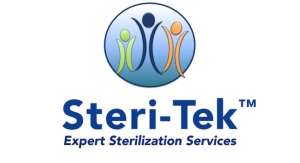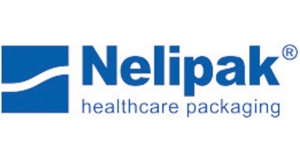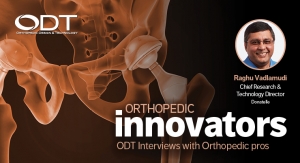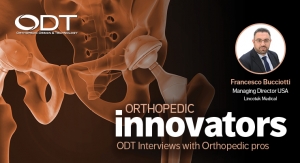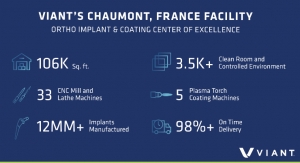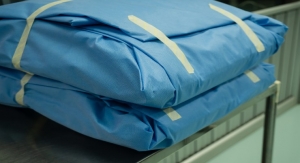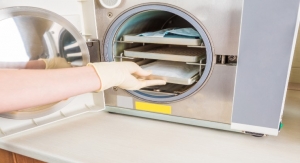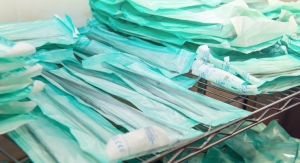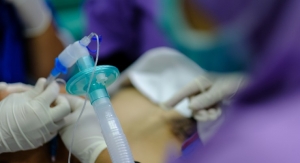Mark Crawford, Contributing Writer02.12.18
Packaging and sterilization are rapidly expanding markets within the medical device industry. Both are critical to ensure devices are contaminant-free, safe to use, and able to withstand a wide range of shipping and storage conditions. These markets are also fairly mature in their technologies and rely on long-standing and highly proven methods.
This standard approach is starting to change, however, as medical devices continue to get smaller and more complex, including combination products that incorporate sensitive materials, such as drugs or bioresorbables. The trend toward complexity makes it more difficult to completely sterilize these products with standard methods, such as gamma irradiation (Cobalt 60 radiation) and ethylene oxide (EtO). As a result, “accelerator-based technologies such as electron beam and X-ray are seeing continued focus and investment as a complement to cobalt-based processing,” said Brian McEvoy, senior director of global technologies for STERIS Applied Sterilization Technologies, a Mentor, Ohio-based provider of contract sterilization and microbial reduction services for the medical device and pharma industries. “Variants and alternatives to traditional EtO processing are also being developed, such as processing with EtO:CO2 mixtures and alternative sterilant gases.”
Alternative gases include vaporized hydrogen peroxide, vaporized peracetic acid, and nitrogen dioxide. These lower-temperature processes are well-suited for smaller-volume, niche-type medical devices. For example, Hanover, Md.-based Noxilizer Inc. provides low-temperature (10 to 30 degrees C) nitrogen dioxide sterilization and decontamination with minimal pressure requirements, no cytotoxic residuals, and rapid cycle times (two to four hours, including aeration). NO2 sterilization is especially effective for prefilled syringes, drug-device combination products, and custom implants.
Medical packaging materials are still dominated by legacy products such as Tyvek and nylon. However, due to evolving regulations, OEMs are finding it harder to stay with legacy (or grandfathered) sealing methods. Sealing continues to be a major challenge for the industry and is one of the most critical steps in the preparation and delivery process for a product. Once a package has been sealed, it must remain intact post-sterilization through transport, delivery, and shelf life, all the way to point of use.
“Design is critical for ensuring the packaging meets its purpose of protecting the device and maintaining the sterile barrier,” said Frits van Gastel, director of quality, Europe, for Nelipak Healthcare Packaging, a Cranston, R.I.-based provider of custom thermoformed packaging solutions for the healthcare industry. “Improper design can result in weak seal flanges and greater risk of the product moving and creating a void in the seal, or perforating the barrier, whether it is a tray/lid combination or pouch.”
What OEMs Want
OEMs want to save money. They want faster ways to sterilize and package their products that are just as effective as the standard approaches, but cost less. Packaging engineers are challenged to cut costs by reducing the amount of packaging required to ship devices—without compromising product integrity or the sterile barrier. Lead times for packaging development must be taken into account for new products, especially for new packaging formats or materials that require extensive validation testing. For this reason, OEMs are still reluctant to embrace new sterilization and packaging formats unless there is a strong business need to work outside of tried-and-tested solutions.
For complex medical devices, OEMs are looking for less-harsh sterilization methods that will not degrade the product or compromise its quality, but still do a complete job of sterilization. They also seek guidance regarding sample size, as well as the testing required to validate sterilization, shelf life, and distribution testing. Other requests include robust validations, biocompatibility testing, materials compatibility testing (limits of reuse), human factors testing of devices, and validation of products using low-temperature sterilization processes cleared by the FDA.
OEMs tend to be the least informed about the sterilization and packaging phases of the product lifecycle. Therefore, they expect their sterilization and packaging suppliers to be key strategic partners for delivering effective solutions for their increasingly complex products. They expect these companies to be top experts in their fields and to reduce costs and time to market by providing proof-of-concepts for proposed solutions. Ideally, OEMs want to lock in these key vendors and shorten their supply chains by working with as few strategic suppliers as possible across multiple business units.
“There is definitely a growing demand for a supplier to take a customer from A to Z, including package material selection, regulatory requirements, sample size justifications, package design, sterilization, shelf life studies, and package distribution testing,” said Pal Khangaldy, consulting manager for Nelson Laboratories, a Salt Lake City, Utah-based provider of medical device testing.
Technology Trends
To optimize product development and speed to market, sterilization and packaging must be considered as early as possible in the design for manufacturability (DFM) process. It does not matter how fantastic a product is—if it suffers damage by sterilization or package failure during transportation or storage, it is worthless.
In fact, validation of sterilization and packaging processes cannot be too robust. These technologies are critical for getting a device to market safely and ensuring compliance with even the most stringent healthcare standards. Sterilization ensures the product is safe to use for patients; packaging protects the device and maintains sterile barrier integrity to the point of use. Another critical role for packaging is how it enables medical staff to clearly identify the part and confirm it has maintained its barrier properties, with no punctures or abrasion damage during transport.
Sterilization
Leading sterilization methods are gamma irradiation, EtO, electron beam, ion beam, and steam. Gamma irradiation and EtO are still the most widely used; they are time-tested methods that are fully understood by the FDA and considered to be standard methods, which makes OEMs feel more secure in using them for their submissions. However, many newer devices are more sensitive to gamma irradiation and EtO. For example, EtO can harm some sensitive materials because they get too hot; therefore, cooler sterilization cycles are required.
“A number of new devices are also too sensitive to handle gamma irradiation, so we have developed methods to trick the material by freezing or refrigerating the product, or giving it half a dose of radiation, letting it relax back to its steady state, and then delivering the second dose,” said Larry Nichols, CEO of Steri-Tek, a Fremont, Calif.-based provider of E-beam sterilization and X-ray irradiation for complex medical devices and sensitive materials.
Steri-Tek is one of the few companies in the world that provides X-ray sterilization, which can sterilize dense material. The disadvantage to X-ray is that it is inefficient and expensive to use. Steri-Tek uses E-beam radiation and a tantalum target to convert electrons to photons to create the X-ray beam. The process is, however, less than 10 percent efficient. “X-ray is ideal for very dense products,” said Nichols. “Anything that can be done with gamma can be done with X-ray, with less material damage.”
Some companies are moving toward E-beam, which can deliver radiation to specific areas of a medical device. E-beam is less harsh than gamma and has a faster turnaround. In general, E-beam is effective for about 80 percent of the products that are currently sterilized with gamma. “E-beam also offers the flexibility of item-by-item processing, as well as accommodating small-volume, niche, or high-value products not suited to bulk processing,” said McEvoy.
New and advanced materials will continue to challenge technology sterilization processes. “This is one of the main reasons we are seeing increases in reusability testing of new devices and materials [repetitive cycles], biocompatibility testing, human factors testing, and requests for additional efficacy testing for low-temperature sterilization processes such as hydrogen peroxide and EtO,” said Gary Socola, president of HIGHPOWER Validation Testing & Lab Services, a Rochester, N.Y.-based provider of reusable medical device cleaning, packaging, and sterilization validation services.
For biocompatibility testing, in the past, many legacy devices may only have gone through a cytotoxicity test. Today, however, if that same device was being reviewed by the FDA for a 510(k) clearance in 2018, it would likely require an irritation or sensitization study as well. “Therefore,” Socola added, “OEMs should be familiar with the ISO 10993 series of biocompatibility standards and try to stay ahead of changes at the FDA Office of Device Evaluation.”
Another way of making it easier to sterilize some new and advanced products and materials is by reducing the required sterility assurance level (SAL). The current SAL for medical devices is 10-6. However, there is movement within the industry that is pushing the FDA to approve lower levels of 10-5, 10-4, or even 10-3.
“There are some devices out there that could be saving lives, but cannot withstand the intensity of 10-6 sterilization,” said Nichols. “It is likely some of these products can be safely sterilized at lower levels. In contrast, drugs only require 10-3, whereas medical devices require 10-6. Why are medical devices held to such a higher standard? The FDA will consider a lower sterility assurance level on a case-by-case basis. However, even if a company can prove its device cannot be sterilized 10-6, it is still very difficult to get FDA approval for a lower level.”
Packaging
Medical device manufacturers continue to look for efficiencies in their processes to reduce costs, with the ultimate goal of creating an optimized packaging design that protects the device to point-of-use, while reducing total costs by eliminating material waste and making transportation, storage, and sterilization safer and more efficient. User-centric packaging design and configurations are also becoming more prevalent, which speeds up aseptic transfer and makes devices more intuitive and easier to use. Further, more OEMs are incorporating DFM into the production process, which helps make packaging mistake-proof.
Another trend is increased use of vacuum packaging. Modified atmosphere/low oxygen is important for those packaging products that degrade in the presence of high oxygen; this can be achieved with cycles of inert gas and vacuum. Restraining a product from movement by vacuum further protects products during shipping and reduces punctures or pin holes.
“The biggest request from our customers is making the pouches smaller by vacuuming,” said Kathleen Feyti, technical sales manager for PackworldUSA, a Nazareth, Penn.-based manufacturer of heat-sealing equipment and vacuum impulse heat-sealing equipment for medical and pharmaceutical companies. “Having a pouch that is easy for operators to load, with enough space for marking, is a good idea, with the cost savings in sterilization and carton size occurring during the final step.”
Adhesion science is taking on a larger role in improving seal integrity. For example, Dr. Steven Abbott, an international expert on adhesion science, continues to research new ways to optimize laminate materials and maintain their cohesiveness during the sterilization and accelerated aging processes.
“For example, recent developments indicate that adhesion takes place at the nanometer level,” said James Dwyer, vice president of technical operations for Millstone Medical Outsourcing, a Fall River, Mass.-based provider of cleanroom packaging and advanced inspection and after-market services. “Therefore, prepping a surface, or determining if a surface is optimized, is much more difficult than previously believed.”
Accelerated aging, which allows MDMs to get products to market more quickly, requires higher temperatures in the aging chamber, as well as a higher dose or longer dwell in the sterilizer. These extremes can initiate an oxidative process in the polymer bonds, resulting in a breakdown of the necessary strength to pass testing subsequent to the accelerated aging conditioning, which can be very frustrating to MDMs trying to get to market.
“The applicability of this advanced research will likely be important to device packaging, as more MDMs are demanding higher performance from packaging laminated films,”
Dwyer added.
Even though advanced technology definitely has its place, packaging improvements can be as simple as getting the specs right. Validation protocols across the medical device industry have become increasingly sophisticated in recent years to help ensure quality and avoid delays to market. However, one aspect of the process that has been slower to evolve is the packaging specifications that are evaluated.
“Generic specifications are still commonly used for healthcare packaging, but listing critical-to-quality requirements that are not linked to the functionally or intended use of a packaging product can lead to ineffective criteria being used to gauge the efficacy of medical device packaging,” said van Gastel. “This can result in considerable delays to market and ultimately cost the OEM unnecessary time, money, and resources to rectify.”
For example, the validation process and path to market can go much more smoothly if the OEM and packaging provider collaborate earlier in the process to develop custom specifications that take into account the Design Failure Mode Effects Analysis (DFMEA). This helps ensure that all required specs are critical-to-quality and accurately related to the product’s intended use and function. “This can speed up time-to-market by eliminating the complexities of making the packaging meet non-relevant and sometimes unrealistic generic specs in order to successfully pass the validation process,” said van Gastel.
Operational Innovations
Nelipak uses simulation technology to show customers at the concept design stage the predicted material distribution for rigid packaging. This is vital information for determining how a design will form before moving to prototype development. Package simulation also gives OEMs data on the package integrity during transportation testing to identify potential issues that may result in product damage and/or seal integrity breach caused by transport and handling. “This greatly reduces lead time by increasing the success rate of the design, before going through the costly and time-consuming physical process,” said van Gastel.
Millstone Medical utilizes radio-frequency identification (RFID) and Bluetooth technologies to make smart dies that talk to the packaging equipment. This in-house technology allows the die to call up its validated parameters. “A sealing die is unique to a packaging configuration which has been validated,” said Dwyer. “If you have your product broadcast its identity to your die, the die communicates that identity to the sealer, as well as whether or not the product is in the correct orientation. This mistake-proofs the packaging process, which results in better quality and lower costs. This is an important capability to have in a high-mix medical device packaging environment.”
Utilizing highly purified water when processing devices continues to be an underappreciated consideration, whether in processes related to packaging material production or in the critical cleaning of medical devices prior to packaging. The key goal is the elimination of endotoxins from the device and the packaging materials—orthopedic devices are susceptible to aseptic loosening and research indicates the presence of endotoxins is a major contributor to this failure mode.
“Sterilization does not remove endotoxins,” said Dwyer. “Although removal of endotoxins through depyrogenation is possible, the most economical approach is prevention through the use of highly purified water. Some commonly used packaging components utilize water-based processes, so it is essential to ensure this water is free from endotoxins.”
According to the World Health Organization (WHO), more than 8 percent of the medical devices in circulation worldwide are counterfeit. The organization created the International Medical Products Anti-Counterfeiting Taskforce to counter this growing threat to patient safety. In tandem, MDMs are showing more interest in applying anti-counterfeiting technology to the sterile barrier to prevent grey or black-market devices from entering the market.
“The nanotechnologies that have recently evolved enable the MDM to embed a marker in the sterile barrier material that responds to a transponder query, making it extremely difficult for counterfeiters,” said Dwyer. “MDMs can work with their packaging vendor and a nanotech company to define and implement the optimum solution.”
Moving Forward
Sterilization and packaging for medical devices rely on mature processes that have stood the test of time. However, MDMs and their sterilization and packaging partners are beginning to move away from tried-and-true processes to explore newer technologies, or to find new ways to use existing technologies. This is increasingly important as OEMs develop more complex products that cannot be sterilized with gamma, EtO, and other standard methods.
New sterilization processes and new packaging systems continue to come into the market. For example, non-destructive testing systems of seal integrity for trays and pouches are becoming more widely available, and reliability has improved over the last few years. A downside, however, is that these systems are still not fast enough to keep up with production speeds of the sealing lines; therefore testing is random and not 100 percent. Several companies are already working on this issue; the solution will have an enormous benefit to the industry by providing the ability to tie data on each package sealed to the inspection results.
Looking toward the future, sustainability is a growing focus for convertors, OEMs, and end users alike across the healthcare industry. Waste reduction through efficient design results in less energy required to manufacture a product; a reduced footprint can decrease sterilization and transportation costs through higher loading factors. Packagers continue to innovate by using fewer components (for example, by putting laser-etched instructions directly on trays, thereby removing instructional leaflets from the mix). Other companies are looking to develop trays that become part of procedures in the surgical theater, thus removing the need for additional containers.
Nelipak evaluates packaging beyond the initial need to protect the device to the point-of-use. This starts with optimizing the design to reduce the amount of material used in the manufacturing process, which in turn requires less material and energy to produce the part. Using simulation tools, Nelipak can streamline the package footprint to increase load efficiency during transportation from its facility to the customer’s loading bay. “These same tools help customers lower their cost of ownership in their internal processes by requiring less energy in handling, sterilization, and transportation to the clinical environment,” said van Gastel.
Applying its sustainability mindset, Nelipak recently reduced the overall footprint of a packaging assembly for screw sets and plates by using sealed trays instead of pouches. The new design decreased packaging volume by 40 percent for plates and 240 percent for screws. “The previous packaging only held one screw at a time; the new pack holds two screws and one locking screw,” said van Gastel. “This removes four pouches from the waste stream.”
Sustainability is a team effort and creates efficiencies and savings throughout the supply chain. In fact, with the right partners, sustainability can become a cultural way of thinking that starts as early as concept and design with the OEM.
“Some OEMs don’t realize how critical innovation is early on in the design phase of their packaging, which includes sustainability,” added van Gastel. “Understanding that their packaging provider can be a true partner that brings added value, engineering expertise, and savings to the overall process can really improve all aspects of the supply chain.”
Mark Crawford is a full-time freelance business and marketing/communications writer based in Madison, Wis. His clients range from startups to global manufacturing leaders. He also writes a variety of feature articles for regional and national publications and is the author of five books.
This standard approach is starting to change, however, as medical devices continue to get smaller and more complex, including combination products that incorporate sensitive materials, such as drugs or bioresorbables. The trend toward complexity makes it more difficult to completely sterilize these products with standard methods, such as gamma irradiation (Cobalt 60 radiation) and ethylene oxide (EtO). As a result, “accelerator-based technologies such as electron beam and X-ray are seeing continued focus and investment as a complement to cobalt-based processing,” said Brian McEvoy, senior director of global technologies for STERIS Applied Sterilization Technologies, a Mentor, Ohio-based provider of contract sterilization and microbial reduction services for the medical device and pharma industries. “Variants and alternatives to traditional EtO processing are also being developed, such as processing with EtO:CO2 mixtures and alternative sterilant gases.”
Alternative gases include vaporized hydrogen peroxide, vaporized peracetic acid, and nitrogen dioxide. These lower-temperature processes are well-suited for smaller-volume, niche-type medical devices. For example, Hanover, Md.-based Noxilizer Inc. provides low-temperature (10 to 30 degrees C) nitrogen dioxide sterilization and decontamination with minimal pressure requirements, no cytotoxic residuals, and rapid cycle times (two to four hours, including aeration). NO2 sterilization is especially effective for prefilled syringes, drug-device combination products, and custom implants.
Medical packaging materials are still dominated by legacy products such as Tyvek and nylon. However, due to evolving regulations, OEMs are finding it harder to stay with legacy (or grandfathered) sealing methods. Sealing continues to be a major challenge for the industry and is one of the most critical steps in the preparation and delivery process for a product. Once a package has been sealed, it must remain intact post-sterilization through transport, delivery, and shelf life, all the way to point of use.
“Design is critical for ensuring the packaging meets its purpose of protecting the device and maintaining the sterile barrier,” said Frits van Gastel, director of quality, Europe, for Nelipak Healthcare Packaging, a Cranston, R.I.-based provider of custom thermoformed packaging solutions for the healthcare industry. “Improper design can result in weak seal flanges and greater risk of the product moving and creating a void in the seal, or perforating the barrier, whether it is a tray/lid combination or pouch.”
What OEMs Want
OEMs want to save money. They want faster ways to sterilize and package their products that are just as effective as the standard approaches, but cost less. Packaging engineers are challenged to cut costs by reducing the amount of packaging required to ship devices—without compromising product integrity or the sterile barrier. Lead times for packaging development must be taken into account for new products, especially for new packaging formats or materials that require extensive validation testing. For this reason, OEMs are still reluctant to embrace new sterilization and packaging formats unless there is a strong business need to work outside of tried-and-tested solutions.
For complex medical devices, OEMs are looking for less-harsh sterilization methods that will not degrade the product or compromise its quality, but still do a complete job of sterilization. They also seek guidance regarding sample size, as well as the testing required to validate sterilization, shelf life, and distribution testing. Other requests include robust validations, biocompatibility testing, materials compatibility testing (limits of reuse), human factors testing of devices, and validation of products using low-temperature sterilization processes cleared by the FDA.
OEMs tend to be the least informed about the sterilization and packaging phases of the product lifecycle. Therefore, they expect their sterilization and packaging suppliers to be key strategic partners for delivering effective solutions for their increasingly complex products. They expect these companies to be top experts in their fields and to reduce costs and time to market by providing proof-of-concepts for proposed solutions. Ideally, OEMs want to lock in these key vendors and shorten their supply chains by working with as few strategic suppliers as possible across multiple business units.
“There is definitely a growing demand for a supplier to take a customer from A to Z, including package material selection, regulatory requirements, sample size justifications, package design, sterilization, shelf life studies, and package distribution testing,” said Pal Khangaldy, consulting manager for Nelson Laboratories, a Salt Lake City, Utah-based provider of medical device testing.
Technology Trends
To optimize product development and speed to market, sterilization and packaging must be considered as early as possible in the design for manufacturability (DFM) process. It does not matter how fantastic a product is—if it suffers damage by sterilization or package failure during transportation or storage, it is worthless.
In fact, validation of sterilization and packaging processes cannot be too robust. These technologies are critical for getting a device to market safely and ensuring compliance with even the most stringent healthcare standards. Sterilization ensures the product is safe to use for patients; packaging protects the device and maintains sterile barrier integrity to the point of use. Another critical role for packaging is how it enables medical staff to clearly identify the part and confirm it has maintained its barrier properties, with no punctures or abrasion damage during transport.
Sterilization
Leading sterilization methods are gamma irradiation, EtO, electron beam, ion beam, and steam. Gamma irradiation and EtO are still the most widely used; they are time-tested methods that are fully understood by the FDA and considered to be standard methods, which makes OEMs feel more secure in using them for their submissions. However, many newer devices are more sensitive to gamma irradiation and EtO. For example, EtO can harm some sensitive materials because they get too hot; therefore, cooler sterilization cycles are required.
“A number of new devices are also too sensitive to handle gamma irradiation, so we have developed methods to trick the material by freezing or refrigerating the product, or giving it half a dose of radiation, letting it relax back to its steady state, and then delivering the second dose,” said Larry Nichols, CEO of Steri-Tek, a Fremont, Calif.-based provider of E-beam sterilization and X-ray irradiation for complex medical devices and sensitive materials.
Steri-Tek is one of the few companies in the world that provides X-ray sterilization, which can sterilize dense material. The disadvantage to X-ray is that it is inefficient and expensive to use. Steri-Tek uses E-beam radiation and a tantalum target to convert electrons to photons to create the X-ray beam. The process is, however, less than 10 percent efficient. “X-ray is ideal for very dense products,” said Nichols. “Anything that can be done with gamma can be done with X-ray, with less material damage.”
Some companies are moving toward E-beam, which can deliver radiation to specific areas of a medical device. E-beam is less harsh than gamma and has a faster turnaround. In general, E-beam is effective for about 80 percent of the products that are currently sterilized with gamma. “E-beam also offers the flexibility of item-by-item processing, as well as accommodating small-volume, niche, or high-value products not suited to bulk processing,” said McEvoy.
New and advanced materials will continue to challenge technology sterilization processes. “This is one of the main reasons we are seeing increases in reusability testing of new devices and materials [repetitive cycles], biocompatibility testing, human factors testing, and requests for additional efficacy testing for low-temperature sterilization processes such as hydrogen peroxide and EtO,” said Gary Socola, president of HIGHPOWER Validation Testing & Lab Services, a Rochester, N.Y.-based provider of reusable medical device cleaning, packaging, and sterilization validation services.
For biocompatibility testing, in the past, many legacy devices may only have gone through a cytotoxicity test. Today, however, if that same device was being reviewed by the FDA for a 510(k) clearance in 2018, it would likely require an irritation or sensitization study as well. “Therefore,” Socola added, “OEMs should be familiar with the ISO 10993 series of biocompatibility standards and try to stay ahead of changes at the FDA Office of Device Evaluation.”
Another way of making it easier to sterilize some new and advanced products and materials is by reducing the required sterility assurance level (SAL). The current SAL for medical devices is 10-6. However, there is movement within the industry that is pushing the FDA to approve lower levels of 10-5, 10-4, or even 10-3.
“There are some devices out there that could be saving lives, but cannot withstand the intensity of 10-6 sterilization,” said Nichols. “It is likely some of these products can be safely sterilized at lower levels. In contrast, drugs only require 10-3, whereas medical devices require 10-6. Why are medical devices held to such a higher standard? The FDA will consider a lower sterility assurance level on a case-by-case basis. However, even if a company can prove its device cannot be sterilized 10-6, it is still very difficult to get FDA approval for a lower level.”
Packaging
Medical device manufacturers continue to look for efficiencies in their processes to reduce costs, with the ultimate goal of creating an optimized packaging design that protects the device to point-of-use, while reducing total costs by eliminating material waste and making transportation, storage, and sterilization safer and more efficient. User-centric packaging design and configurations are also becoming more prevalent, which speeds up aseptic transfer and makes devices more intuitive and easier to use. Further, more OEMs are incorporating DFM into the production process, which helps make packaging mistake-proof.
Another trend is increased use of vacuum packaging. Modified atmosphere/low oxygen is important for those packaging products that degrade in the presence of high oxygen; this can be achieved with cycles of inert gas and vacuum. Restraining a product from movement by vacuum further protects products during shipping and reduces punctures or pin holes.
“The biggest request from our customers is making the pouches smaller by vacuuming,” said Kathleen Feyti, technical sales manager for PackworldUSA, a Nazareth, Penn.-based manufacturer of heat-sealing equipment and vacuum impulse heat-sealing equipment for medical and pharmaceutical companies. “Having a pouch that is easy for operators to load, with enough space for marking, is a good idea, with the cost savings in sterilization and carton size occurring during the final step.”
Adhesion science is taking on a larger role in improving seal integrity. For example, Dr. Steven Abbott, an international expert on adhesion science, continues to research new ways to optimize laminate materials and maintain their cohesiveness during the sterilization and accelerated aging processes.
“For example, recent developments indicate that adhesion takes place at the nanometer level,” said James Dwyer, vice president of technical operations for Millstone Medical Outsourcing, a Fall River, Mass.-based provider of cleanroom packaging and advanced inspection and after-market services. “Therefore, prepping a surface, or determining if a surface is optimized, is much more difficult than previously believed.”
Accelerated aging, which allows MDMs to get products to market more quickly, requires higher temperatures in the aging chamber, as well as a higher dose or longer dwell in the sterilizer. These extremes can initiate an oxidative process in the polymer bonds, resulting in a breakdown of the necessary strength to pass testing subsequent to the accelerated aging conditioning, which can be very frustrating to MDMs trying to get to market.
“The applicability of this advanced research will likely be important to device packaging, as more MDMs are demanding higher performance from packaging laminated films,”
Dwyer added.
Even though advanced technology definitely has its place, packaging improvements can be as simple as getting the specs right. Validation protocols across the medical device industry have become increasingly sophisticated in recent years to help ensure quality and avoid delays to market. However, one aspect of the process that has been slower to evolve is the packaging specifications that are evaluated.
“Generic specifications are still commonly used for healthcare packaging, but listing critical-to-quality requirements that are not linked to the functionally or intended use of a packaging product can lead to ineffective criteria being used to gauge the efficacy of medical device packaging,” said van Gastel. “This can result in considerable delays to market and ultimately cost the OEM unnecessary time, money, and resources to rectify.”
For example, the validation process and path to market can go much more smoothly if the OEM and packaging provider collaborate earlier in the process to develop custom specifications that take into account the Design Failure Mode Effects Analysis (DFMEA). This helps ensure that all required specs are critical-to-quality and accurately related to the product’s intended use and function. “This can speed up time-to-market by eliminating the complexities of making the packaging meet non-relevant and sometimes unrealistic generic specs in order to successfully pass the validation process,” said van Gastel.
Operational Innovations
Nelipak uses simulation technology to show customers at the concept design stage the predicted material distribution for rigid packaging. This is vital information for determining how a design will form before moving to prototype development. Package simulation also gives OEMs data on the package integrity during transportation testing to identify potential issues that may result in product damage and/or seal integrity breach caused by transport and handling. “This greatly reduces lead time by increasing the success rate of the design, before going through the costly and time-consuming physical process,” said van Gastel.
Millstone Medical utilizes radio-frequency identification (RFID) and Bluetooth technologies to make smart dies that talk to the packaging equipment. This in-house technology allows the die to call up its validated parameters. “A sealing die is unique to a packaging configuration which has been validated,” said Dwyer. “If you have your product broadcast its identity to your die, the die communicates that identity to the sealer, as well as whether or not the product is in the correct orientation. This mistake-proofs the packaging process, which results in better quality and lower costs. This is an important capability to have in a high-mix medical device packaging environment.”
Utilizing highly purified water when processing devices continues to be an underappreciated consideration, whether in processes related to packaging material production or in the critical cleaning of medical devices prior to packaging. The key goal is the elimination of endotoxins from the device and the packaging materials—orthopedic devices are susceptible to aseptic loosening and research indicates the presence of endotoxins is a major contributor to this failure mode.
“Sterilization does not remove endotoxins,” said Dwyer. “Although removal of endotoxins through depyrogenation is possible, the most economical approach is prevention through the use of highly purified water. Some commonly used packaging components utilize water-based processes, so it is essential to ensure this water is free from endotoxins.”
According to the World Health Organization (WHO), more than 8 percent of the medical devices in circulation worldwide are counterfeit. The organization created the International Medical Products Anti-Counterfeiting Taskforce to counter this growing threat to patient safety. In tandem, MDMs are showing more interest in applying anti-counterfeiting technology to the sterile barrier to prevent grey or black-market devices from entering the market.
“The nanotechnologies that have recently evolved enable the MDM to embed a marker in the sterile barrier material that responds to a transponder query, making it extremely difficult for counterfeiters,” said Dwyer. “MDMs can work with their packaging vendor and a nanotech company to define and implement the optimum solution.”
Moving Forward
Sterilization and packaging for medical devices rely on mature processes that have stood the test of time. However, MDMs and their sterilization and packaging partners are beginning to move away from tried-and-true processes to explore newer technologies, or to find new ways to use existing technologies. This is increasingly important as OEMs develop more complex products that cannot be sterilized with gamma, EtO, and other standard methods.
New sterilization processes and new packaging systems continue to come into the market. For example, non-destructive testing systems of seal integrity for trays and pouches are becoming more widely available, and reliability has improved over the last few years. A downside, however, is that these systems are still not fast enough to keep up with production speeds of the sealing lines; therefore testing is random and not 100 percent. Several companies are already working on this issue; the solution will have an enormous benefit to the industry by providing the ability to tie data on each package sealed to the inspection results.
Looking toward the future, sustainability is a growing focus for convertors, OEMs, and end users alike across the healthcare industry. Waste reduction through efficient design results in less energy required to manufacture a product; a reduced footprint can decrease sterilization and transportation costs through higher loading factors. Packagers continue to innovate by using fewer components (for example, by putting laser-etched instructions directly on trays, thereby removing instructional leaflets from the mix). Other companies are looking to develop trays that become part of procedures in the surgical theater, thus removing the need for additional containers.
Nelipak evaluates packaging beyond the initial need to protect the device to the point-of-use. This starts with optimizing the design to reduce the amount of material used in the manufacturing process, which in turn requires less material and energy to produce the part. Using simulation tools, Nelipak can streamline the package footprint to increase load efficiency during transportation from its facility to the customer’s loading bay. “These same tools help customers lower their cost of ownership in their internal processes by requiring less energy in handling, sterilization, and transportation to the clinical environment,” said van Gastel.
Applying its sustainability mindset, Nelipak recently reduced the overall footprint of a packaging assembly for screw sets and plates by using sealed trays instead of pouches. The new design decreased packaging volume by 40 percent for plates and 240 percent for screws. “The previous packaging only held one screw at a time; the new pack holds two screws and one locking screw,” said van Gastel. “This removes four pouches from the waste stream.”
Sustainability is a team effort and creates efficiencies and savings throughout the supply chain. In fact, with the right partners, sustainability can become a cultural way of thinking that starts as early as concept and design with the OEM.
“Some OEMs don’t realize how critical innovation is early on in the design phase of their packaging, which includes sustainability,” added van Gastel. “Understanding that their packaging provider can be a true partner that brings added value, engineering expertise, and savings to the overall process can really improve all aspects of the supply chain.”
Mark Crawford is a full-time freelance business and marketing/communications writer based in Madison, Wis. His clients range from startups to global manufacturing leaders. He also writes a variety of feature articles for regional and national publications and is the author of five books.


